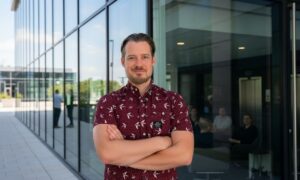Raghavaiah Avula started out as a Telecommunications R&D Engineer at Aricent India in 2006 and rose in the ranks to a Senior Principal Architect at Palo Alto Networks in the San Francisco Bay Area, California over a 15-year journey marked by dedication, technological innovation, and significant professional growth.
Starting out in 2006, straight from obtaining his Master’s degree in Computer Applications from Acharya Nagarjuna University, Raghavaiah stepped into the world of technology at Aricent in Bengaluru, India. His role primarily involved the development of femtocell solutions—a key technology in improving cellular coverage especially in indoor spaces. “The essence of my work was to strengthen connectivity where traditional networks could falter, essentially bringing network access to more personal spaces like homes and small businesses,” Raghavaiah explained.
In the nascent stages of femtocell technology, these innovations were crucial. They hinged on sophisticated radio technologies that complied with the standards set by the 3rd Generation Partnership Project (3GPP), focusing on seamless integration and enhanced network performance. This role was not only about technical proficiency but also about pioneering solutions in a field that was about to explode in relevance with the advent of 4G technology.
By 2008, Raghavaiah’s expertise took him to Nokia Solutions and Networks where he contributed to the development of femtocell gateways. These gateways are critical in linking the femtocell access points with the broader cellular network, ensuring cohesive communication across the network. His work was integral in the development of systems that supported the expansion of cellular networks into more complex and comprehensive infrastructures.
The shift to the United States in 2014 marked a new chapter in Raghavaiah’s career, beginning with a role at T-Mobile and swiftly moving to a significant position at Cisco. Here, he led R&D efforts focused on enhancing 4G outdoor small cell technology for large-scale deployments, including those for major clients like AT&T. “Our team’s innovations not only improved the technological landscape but also brought substantial business, exceeding $120 million in revenue from our solutions for AT&T alone,” Raghavaiah recalled, highlighting the direct impact of his work on Cisco’s success.
During his tenure at Cisco, Raghavaiah also filed a notable patent titled “System and method to facilitate hotspot onboarding for user equipment in a network environment.” This innovation aimed to streamline the process of connecting devices to Wi-Fi hotspots, a critical improvement in user experience and network management.
Raghavaiah Avula’s invention since its filing has profoundly impacted various sectors, demonstrated by its citation in over 21 patents globally from the United States, Canada, Europe, and China. This patent simplifies the Wi-Fi connection process, enhancing user experience and security—a crucial improvement across multiple industries.
- Banking Sector: Cited by Bank of America, the patent supports secure, efficient device network integration, crucial for maintaining stringent security and operational efficiency in banking.
- Tech and Software Companies: Influential firms like Facebook and Cisco have incorporated this technology to streamline network security and device management, indicating its foundational role in large-scale tech environments.
- Telecommunications: Companies like Fujitsu and T-Mobile use the patented method to enhance network management and connectivity, which is essential for delivering quality service to consumers.
- Consumer Electronics and IoT: NVIDIA’s application for connecting IoT devices underscores the patent’s relevance in seamlessly integrating an increasing array of smart devices into networks.
This widespread recognition underscores the patent’s utility in enhancing digital connectivity and security, confirming Raghavaiah’s significant contribution to advancing network technology.
Following this success in 2021, Raghavaiah moved to his current role at Palo Alto Networks, where he is taking the role of Senior Principal Architect. His work now involves leading the architecture and deployment of multi-tenant platforms for Secure Access Service Edge (SASE), crucial for service providers managing large-scale, secure, and efficient enterprise networks. His efforts have not only been recognized within the company but have also played a pivotal role in advancing Palo Alto Networks’ offerings in cybersecurity. He achieved direct review projects valued at over $500 Million with bigger SP markets like Orange , British Telecom , II japan, Tata communications, Verizon, AT&T and Tmobile on network security products.
Here, he filed 2 patents, titled “Forming Channel Device Groups within a Citizens Broadband Radio Service Band (US11202288B2)” and “Private Wireless Network Guest Access (US11051172)“, underscoring his ongoing contribution to the field of network security. These innovations address critical needs in network management and security, ensuring safer and more reliable access for users.
Reflecting on his journey, Raghavaiah shares, “Each step in my career has been about more than just advancements in technology. It’s about making meaningful impacts that resonate on a global scale, improving how we connect, secure, and optimize our digital landscapes.“
Raghavaiah Avula’s career is a vivid narrative of growth, innovation, and the relentless pursuit of making a difference through technology. From his early days in India to his influential role in Silicon Valley, his story is not just about personal success but about shaping the future of telecommunications and cybersecurity.


































